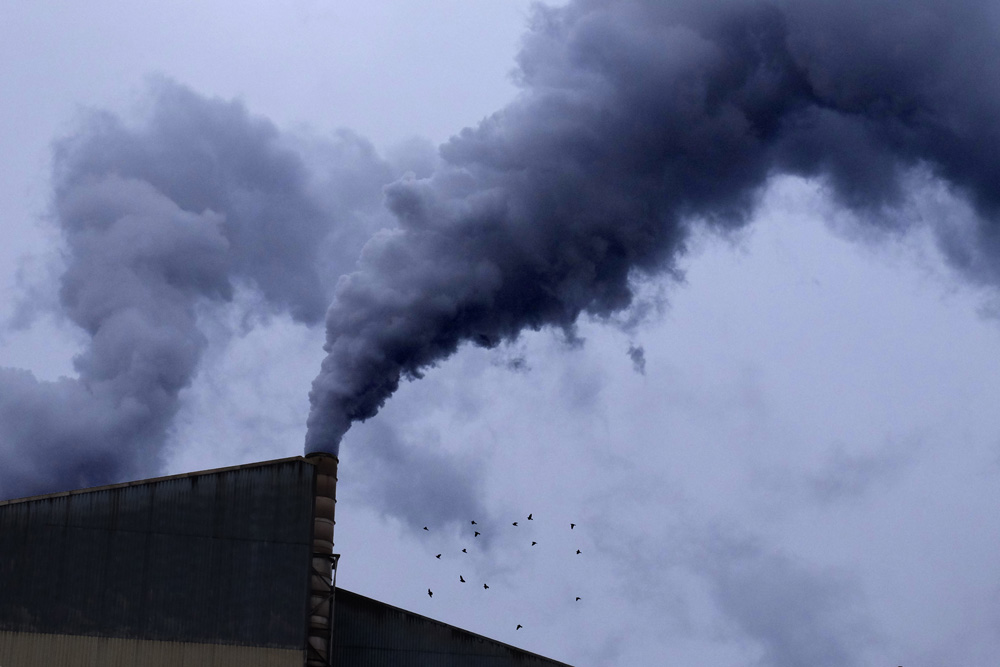
Edgar Thomson Steel Works, Braddock, PA. © Brian Cohen, 2015.

Carrie Furnace is the last remaining unused blast furnace in the Pittsburgh area. It was built in 1881; furnaces 6 and 7, all that remain, functioned from 1908 to 1978, when the plant was shut down. Carrie made iron for the Homestead Works, at its peak employing approximately 2,400 people and producing over 1,000 tons of iron a day. © Brian Cohen, 2011.
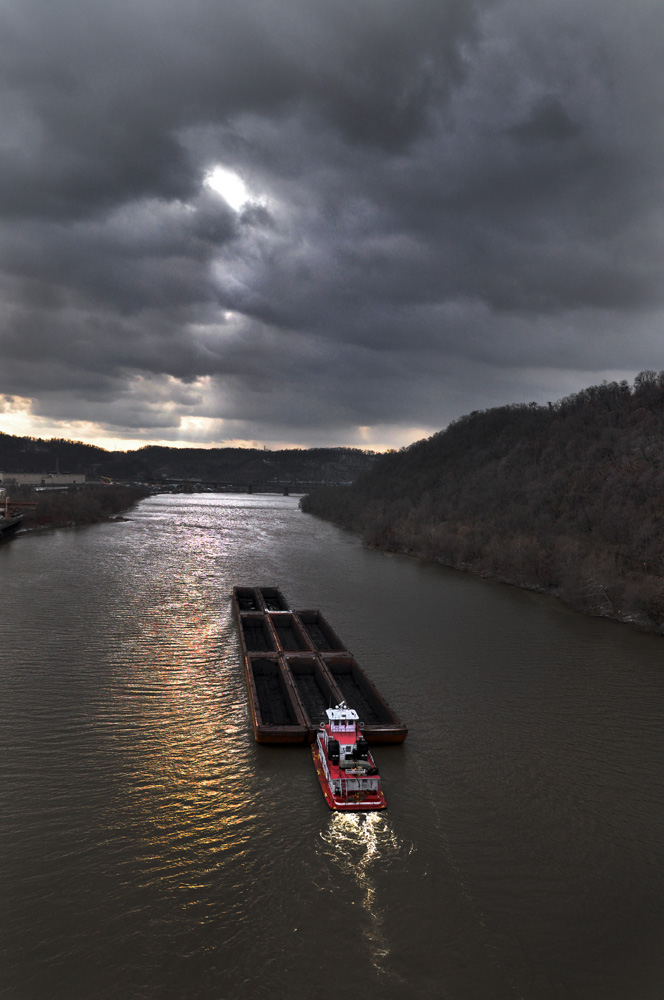
Coal barge, Monongahela River. Coal barges such as this one, just east of Hazelwood, are a common sight on the Mon. Diesel fumes from road, rail and river traffic are a major source of air pollution in the river valleys of Western Pennsylvania. © Brian Cohen, 2010.
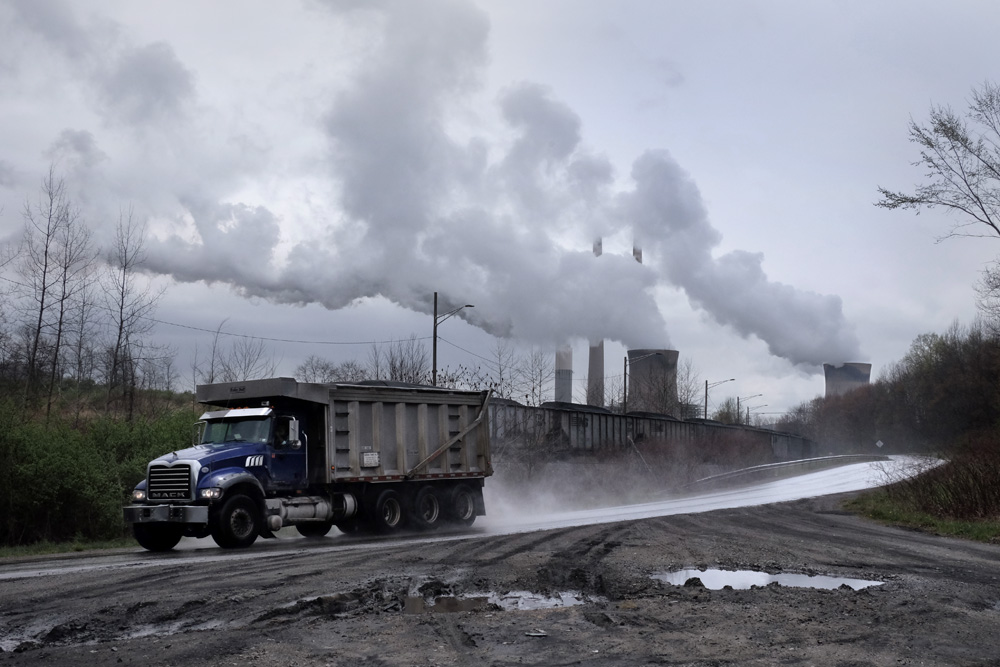
Conemaugh coal-fired power plant, in Indiana County, began operation in the early 1970s. Run by a subsidiary of GenOn Energy Inc., it burns more than 4 million tons of coal a year. According to Wikipedia, “In March 2011, PennEnvironment and the Sierra Club won a favorable court ruling finding that the plant had committed 8,684 violations of the Clean Water Act by discharging waste directly into the Conemaugh River.” © Brian Cohen, 2015.
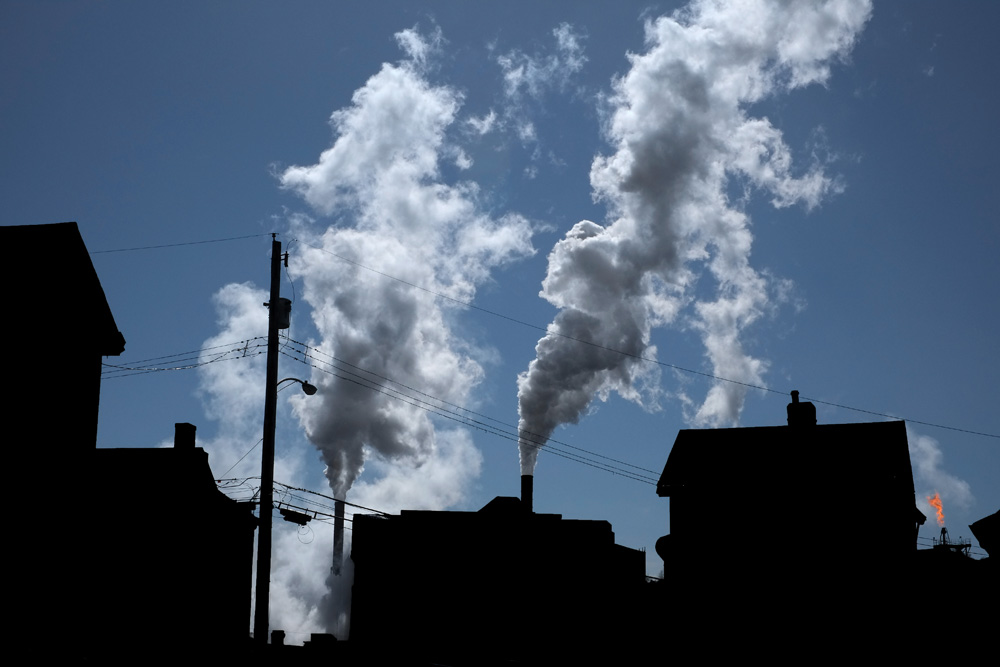
Housing above the Edgar Thomson Steel Works, Braddock, PA. The ETSW remains a major source of air pollution, including small particle levels, in the Pittsburgh region. © Brian Cohen, 2014.

Oil cars, Kilbuck Run, near Sewickley. These cars—carrying plates numbered 1267, designating petroleum crude oil—were traveling east towards Pittsburgh. Diesel exhaust, including from trains, is a major source of air pollution in Pittsburgh. © Brian Cohen, 2015.

At the time this project was in production, the Shenango Inc. coke works on Neville Island was under a court order to reduce emissions. During a period of 432 days between July 2012 and September 2013, the coke works on Neville Island was in violation for 330 days. In December, 2015, it was announced that the plant would shut down. © Brian Cohen, 2014.
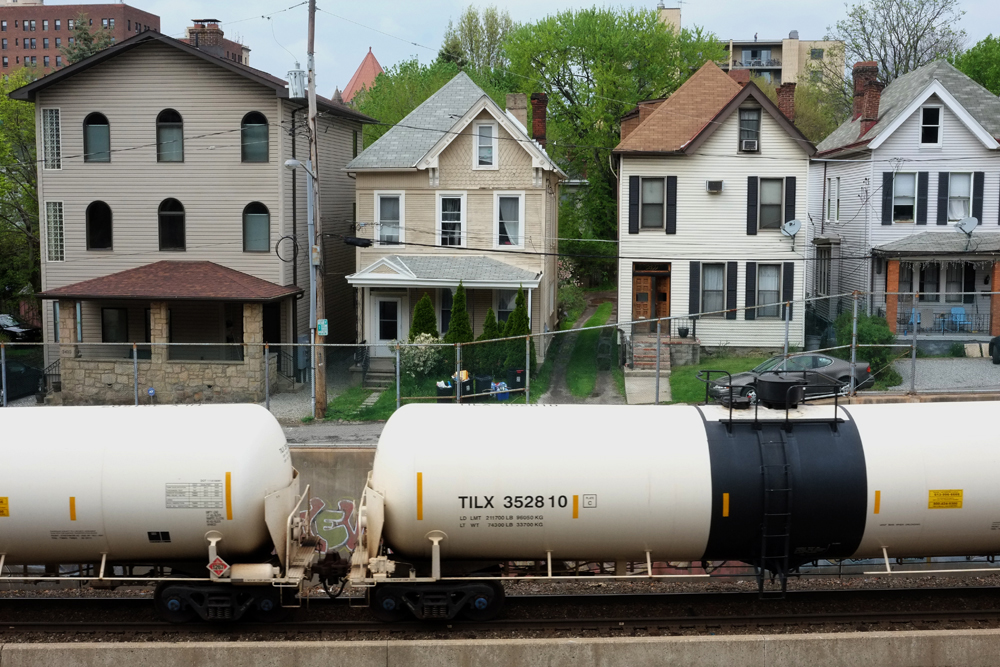
Oil cars running through the Shadyside neighborhood of Pittsburgh. Each car carries carries approximatley 30,000 gallons of volatile fuel. © Brian Cohen, 2015.
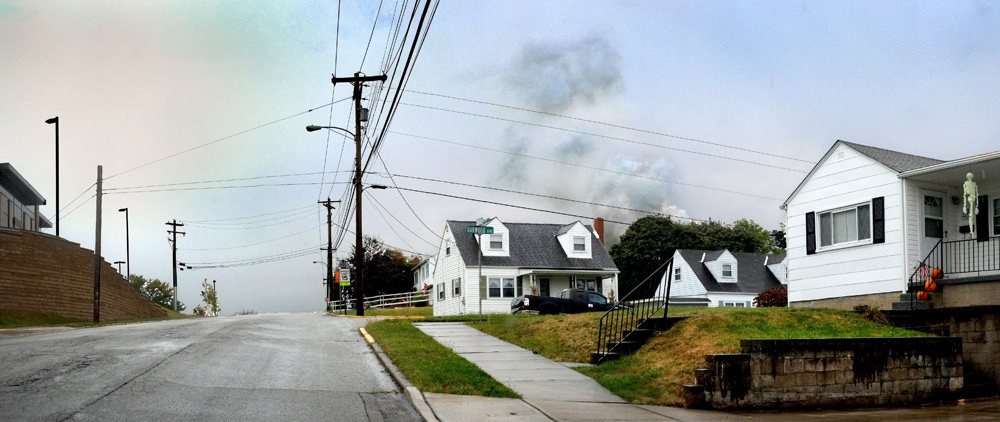
Springdale High School, at left, sits above the Cheswick Power Plant. © Brian Cohen, 2014.
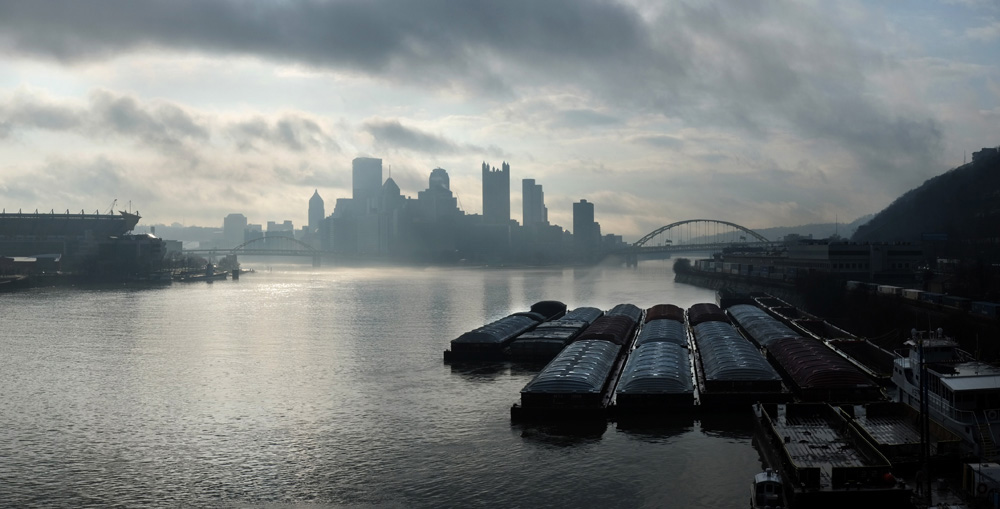
View of Downtown Pittsburgh. © Brian Cohen, 2015.
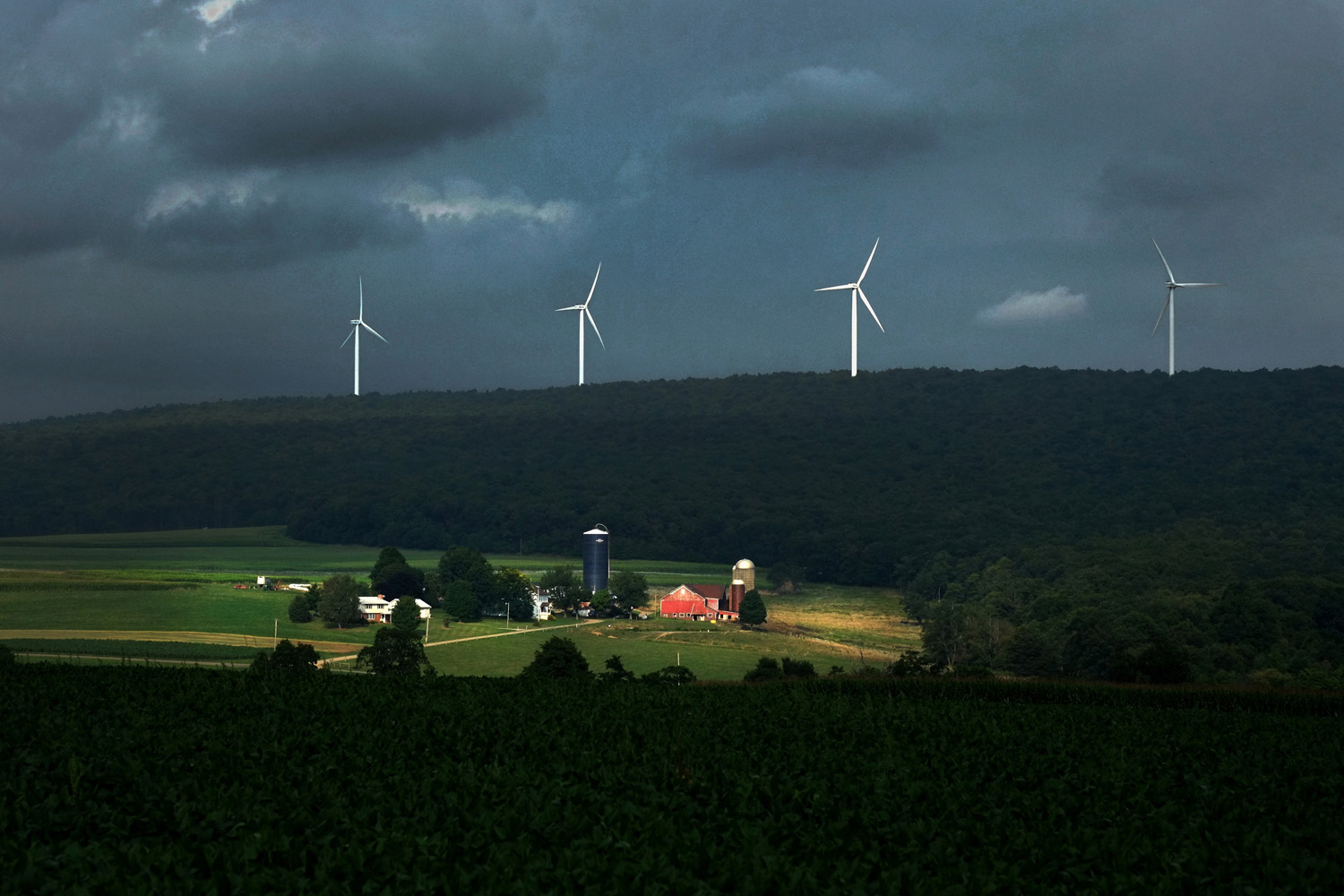
Wind turbines near Berlin, PA. Wind turbines do not produce any known air pollutants. © Brian Cohen, 2014.
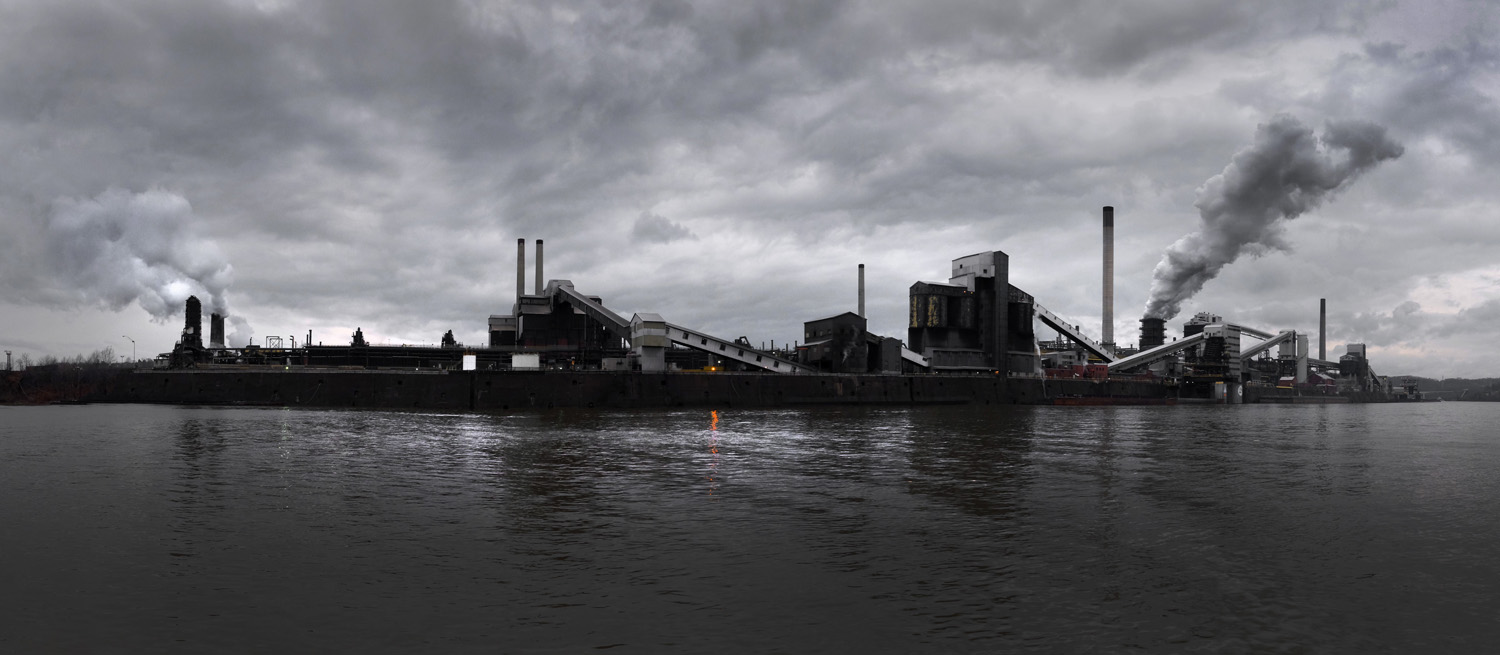
United States Steel Corporation, Clairton Coke Works is the largest coke manufacturing facility in the U.S. Part of the Mon Valley Works, it lies on the Monongahela River about 15 miles southeast of Pittsburgh. According to a September 2014 article in the Pittsburgh Post-Gazette, “U.S. Steel Corp.’s $1.2 billion upgrade of its Clairton Coke Works was supposed to significantly reduce air pollution, but some of the new equipment isn’t working as expected and has been in continuous violation of air emissions limits since its startup in November 2012.” © Brian Cohen, 2015.
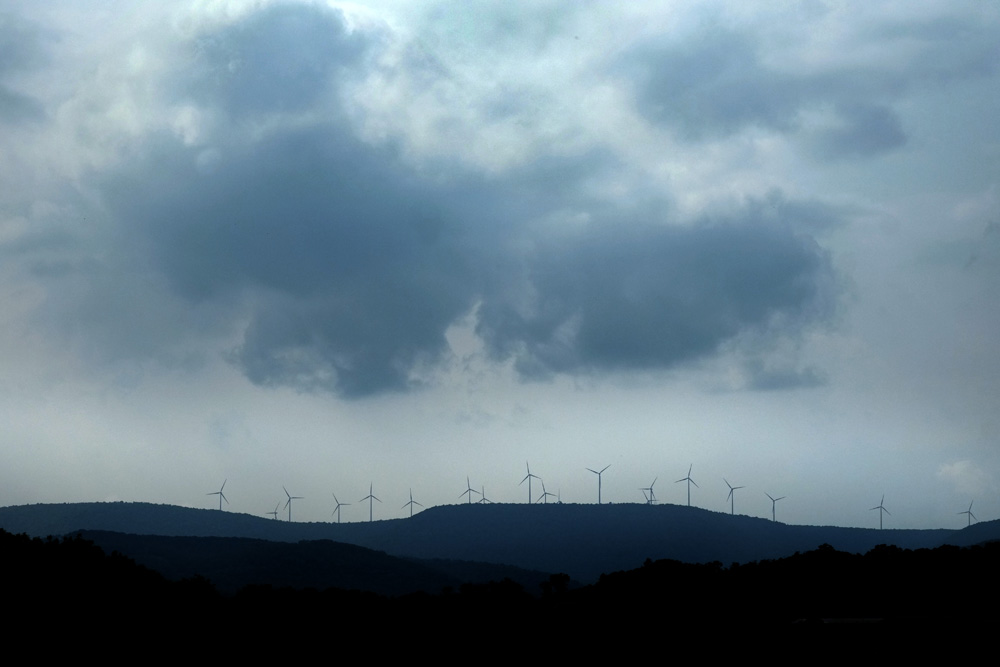
Wind turbines near Altoona, PA. Wind turbines do not produce any known air pollutants. © Brian Cohen, 2014.
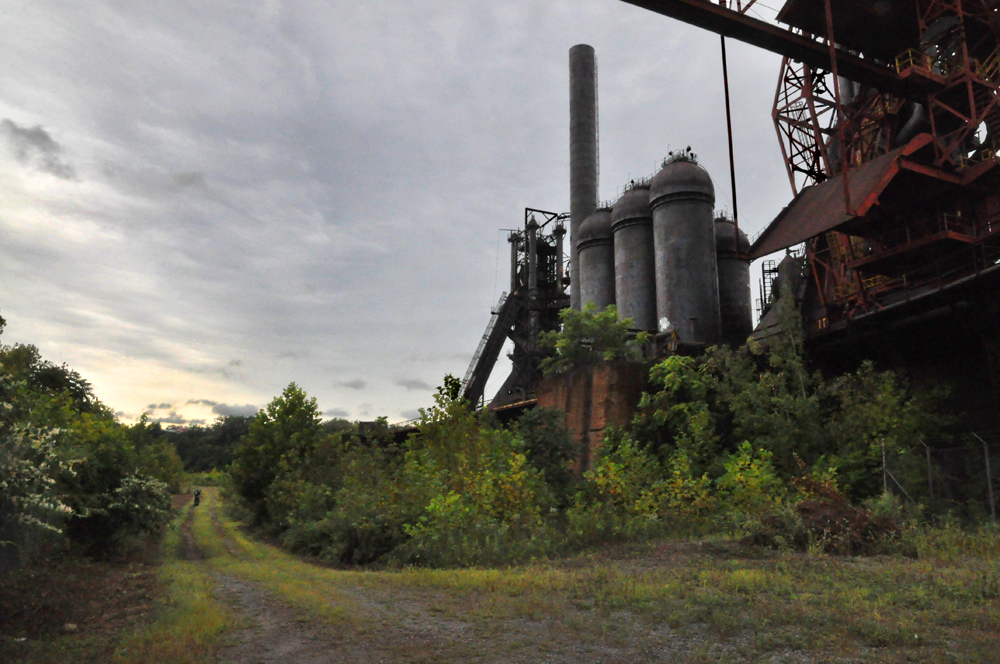
Carrie Furnace is the last remaining unused blast furnace in the Pittsburgh area. It was built in 1881; furnaces 6 and 7, all that remain, functioned from 1908 to 1978, when the plant was shut down. Carrie made iron for the Homestead Works, at its peak employing approximately 2,400 people and producing over 1,000 tons of iron a day. © Brian Cohen, 2011.
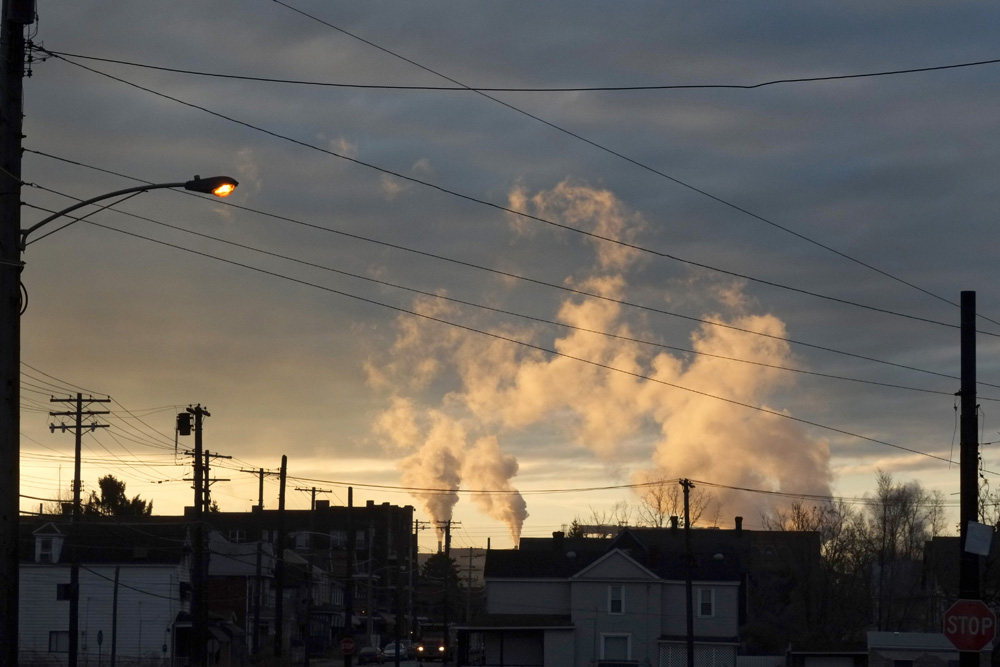
U.S. Steel's Edgar Thomson Steel Works in Braddock, PA. © Brian Cohen, 2014.
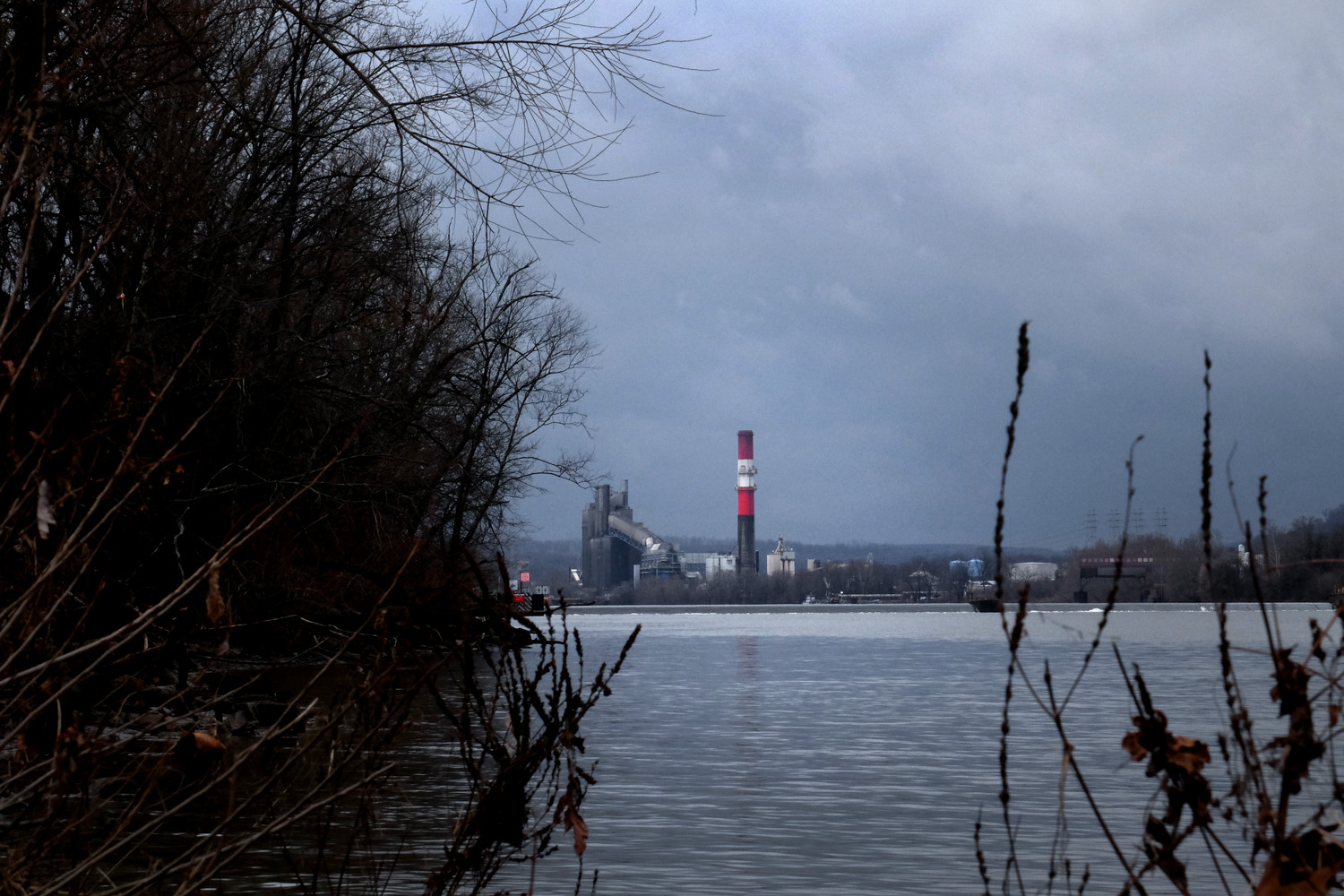
Elrama Power Plant, a coal-fired power station near Elrama, PA, about thirteen miles from Downtown Pittsburgh. It was shut down, due to tightened environmental regulations, in 2012. © Brian Cohen, 2014.

Since the 1940s, the Frank R. Phillips coal-fired power plant in South Heights, PA, provided electricity to Pittsburgh. It was taken out of service in the 1990s. This photograph was taken just before the plant was demolished. © Brian Cohen, 2011.
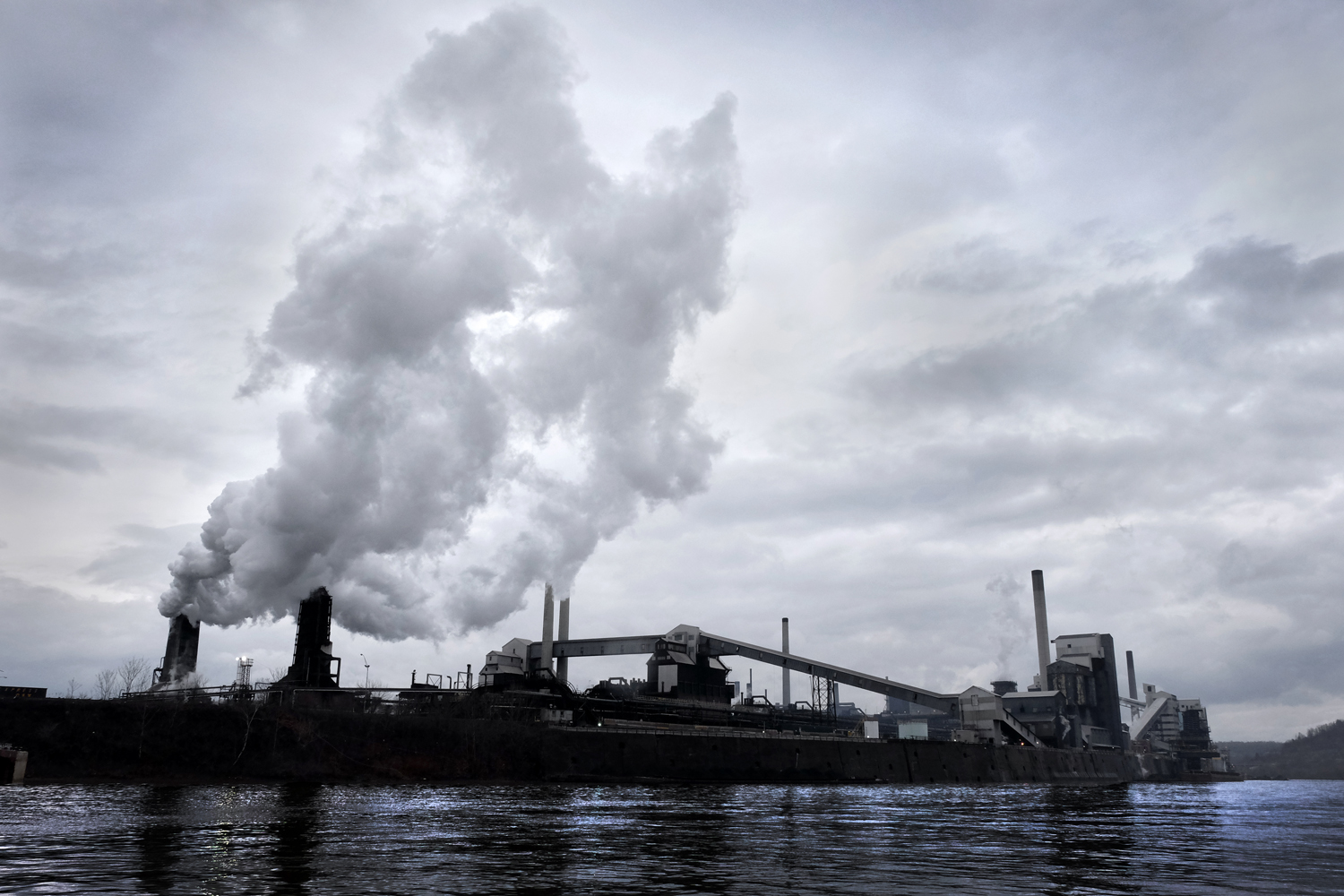
On the Monongahela River about 15 miles southeast of Pittsburgh, United States Steel Corporation's Clairton Coke Works is the largest coke manufacturing facility in the U.S. In January, 2015, the environmental non-profit PennFuture, announced legal action against U.S. Steel for violations of county, state, and federal clean air laws at the Clairton Coke Works. © Brian Cohen, 2015.
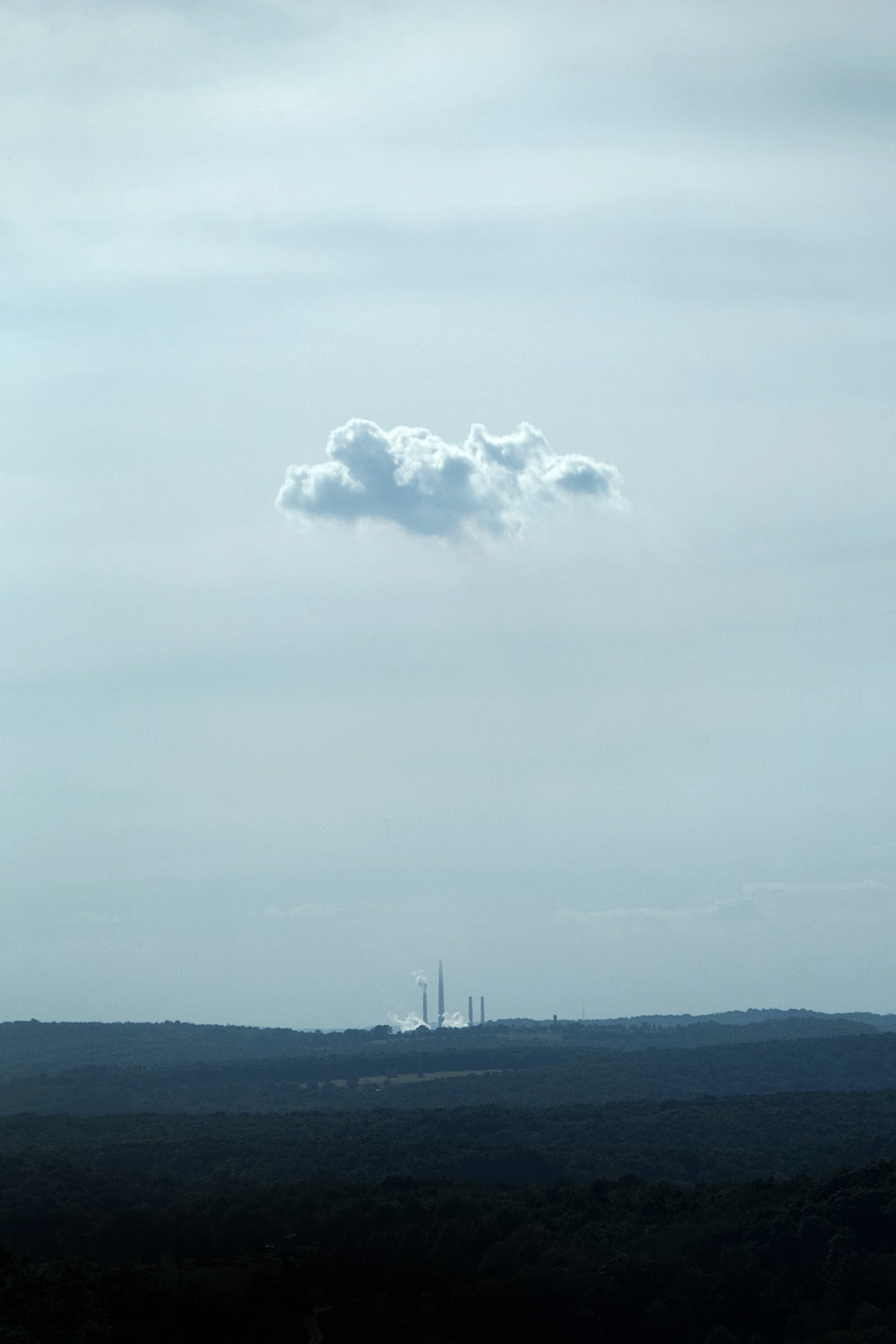
The quality and quantity of cloud cover across the globe has changed since the industrial period. In the simplest of terms, the skies were clearer in pre-industrial times; the burning of fossil fuels is the principle activity that affects both cloud formation and local climates. Anthroclouds – clouds formed by human activity – are a phenomenon associated with, amongst other things, thermal power plants such as the Homer City generating station, pictured here. © Brian Cohen, 2015.
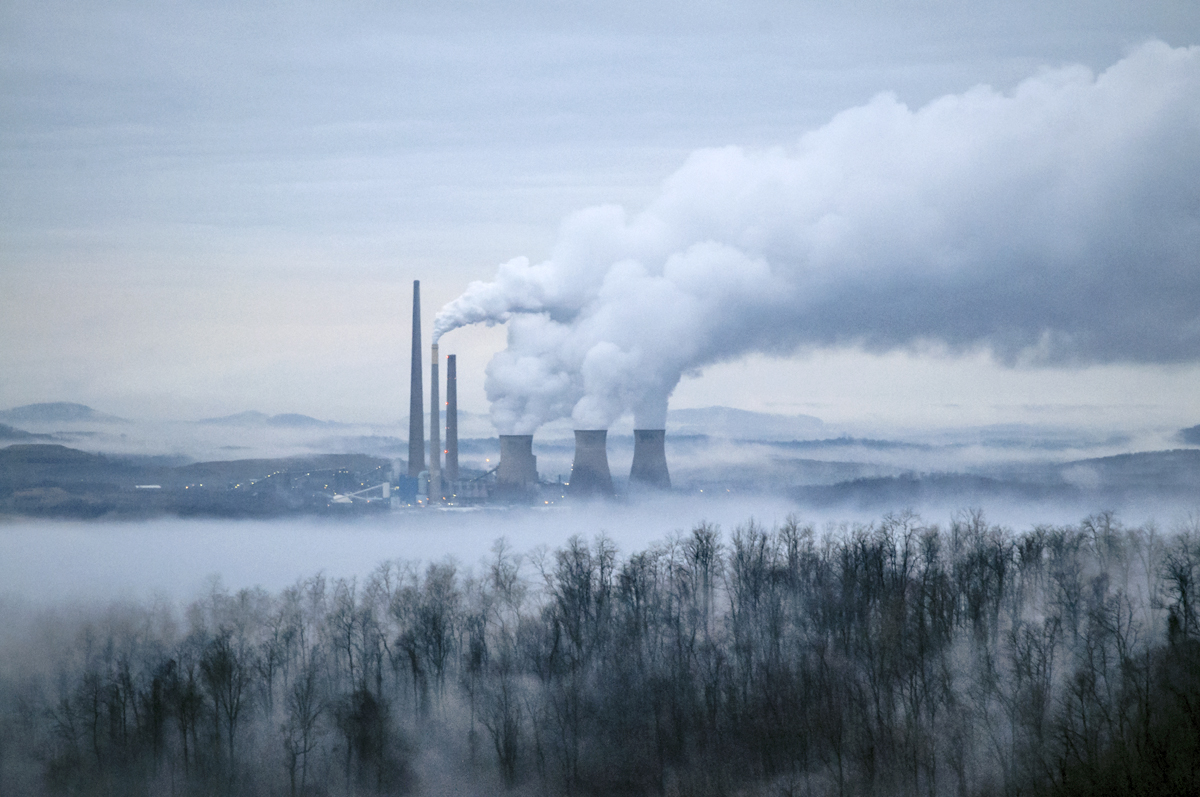
Homer City coal-fired power plant in Indiana County generates enough energy to power two million homes. According to Wikipedia, in 1995 Homer City put out 127,383 pounds (57.780 metric tons) of sulfur dioxide (SO2); though scrubbers were installed in 1998, in 2003 Homer City was ranked the fourth worst SO2 polluter in the nation, putting out 151,262 pounds (68.611 metric tons) of SO2. More scrubbers were installed in 2012.. © Brian Cohen, 2011.

At the time this project was in production, the Shenango Inc. coke works on Neville Island was under a court order to reduce emissions. During a period of 432 days between July 2012 and September 2013, the coke works on Neville Island was in violation for 330 days. In December, 2015, it was announced that the plant would shut down. © Brian Cohen, 2015.
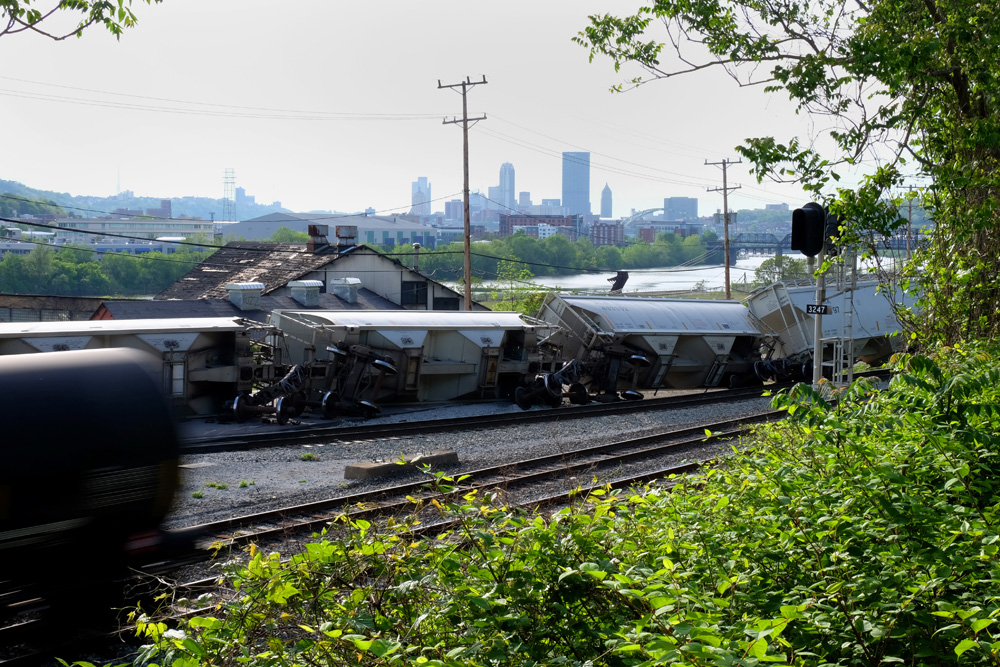
An oil car speeds past a derailed train in the Hazelwood neighborhood of Pittsburgh. Downtown Pittsburgh is less than three miles away. © Brian Cohen, 2015.
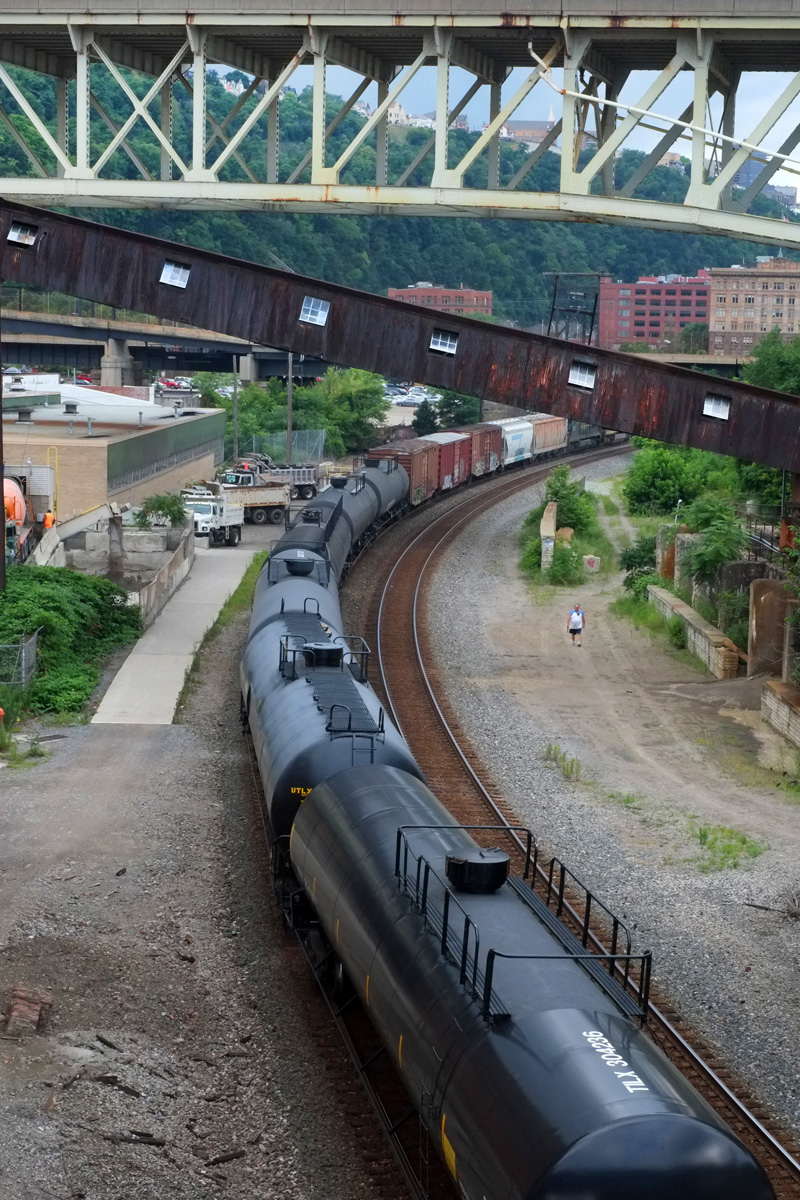
Diesel exhaust from road, river and rail traffic make a significant contribution to poor air quality. © Brian Cohen, 2014.
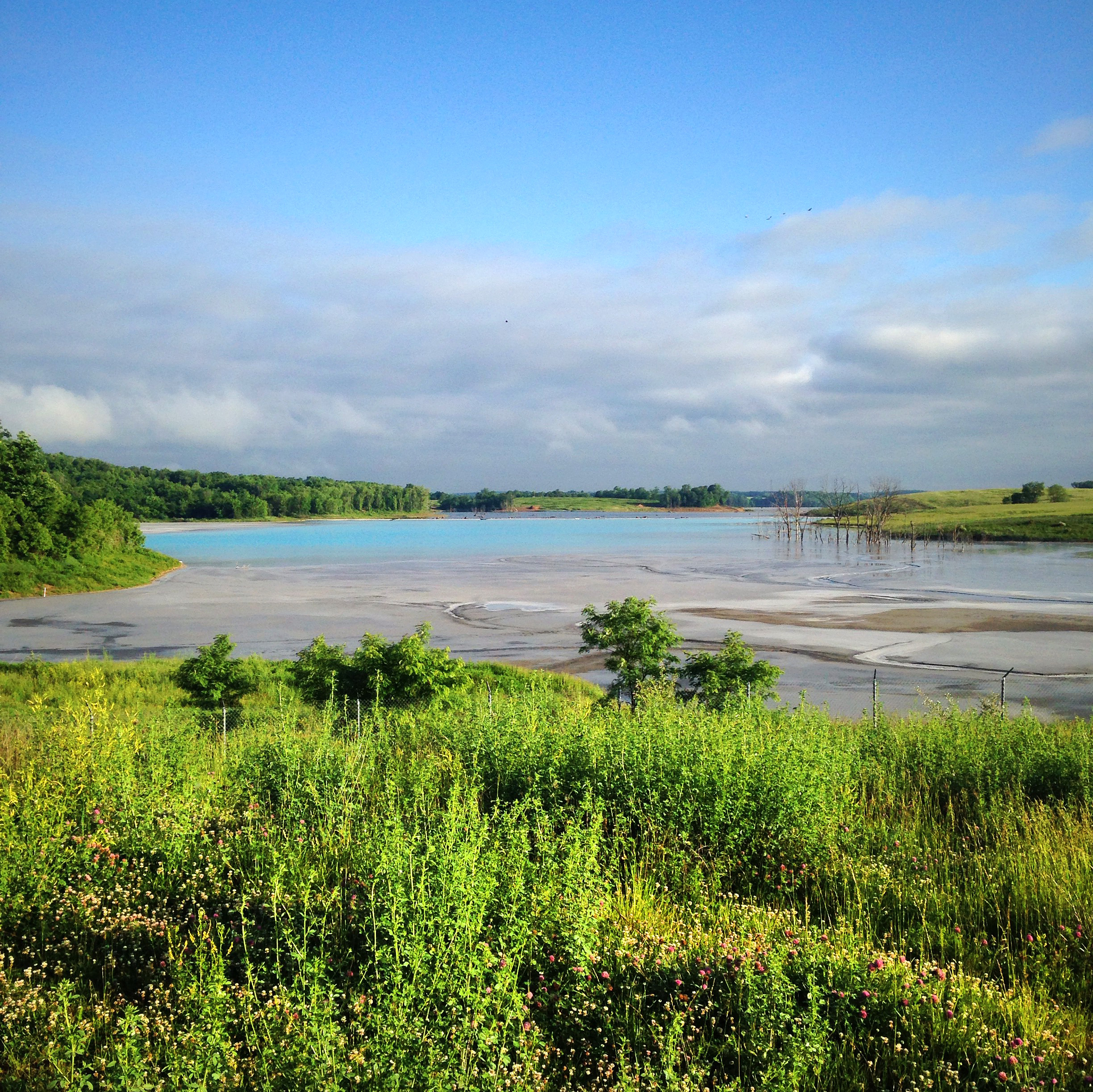
Little Blue Run Lake is a coal ash impoundment for waste piped seven miles from the Bruce Mansfield power plant in Shippingport. It is the largest such site in the United States, containing twenty billion of gallons of coal ash waste. Coal ash contains toxins such as mercury and selenium; the reason for the aquamarine color of the water is disputed, but likely due to the presence of heavy metals such as cadmium. Despite containing many harmful substances, coal ash is not regulated as hazardous waste by the EPA. © Brian Cohen, 2015.
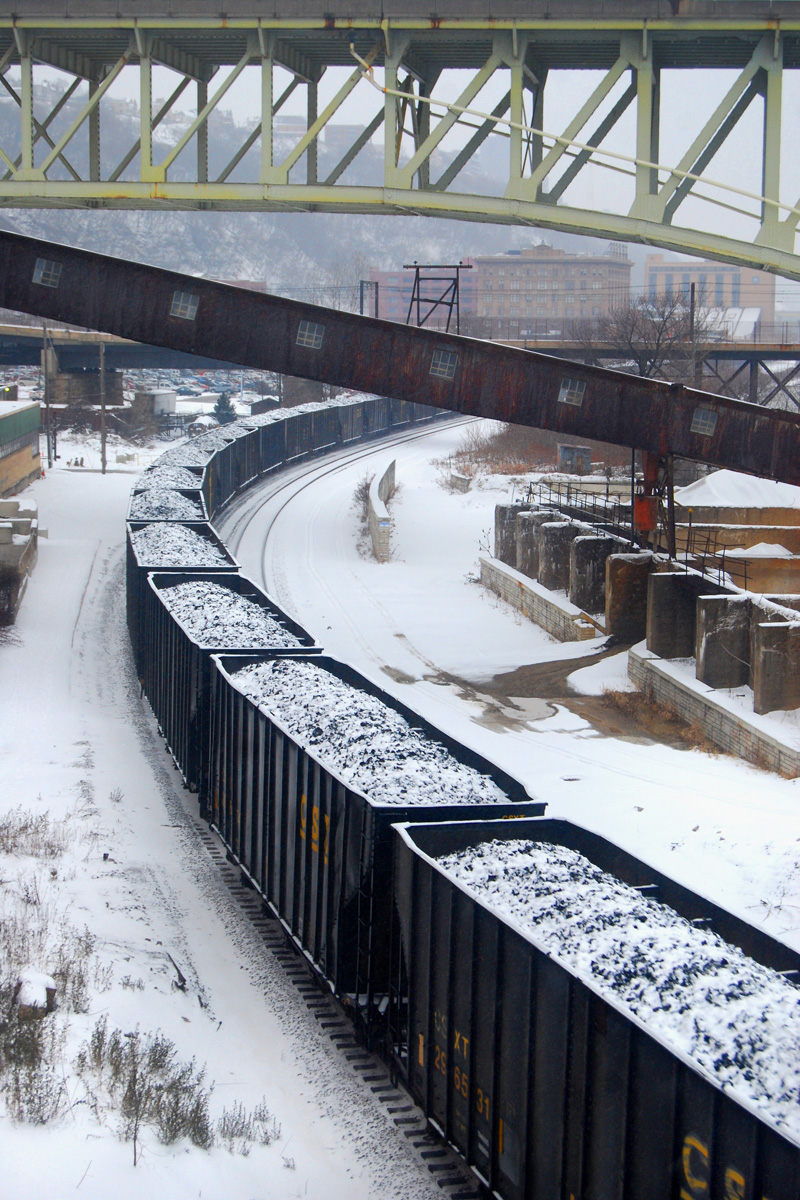
Diesel exhaust from road, river and rail traffic make a significant contribution to poor air quality. © Brian Cohen, 2014.
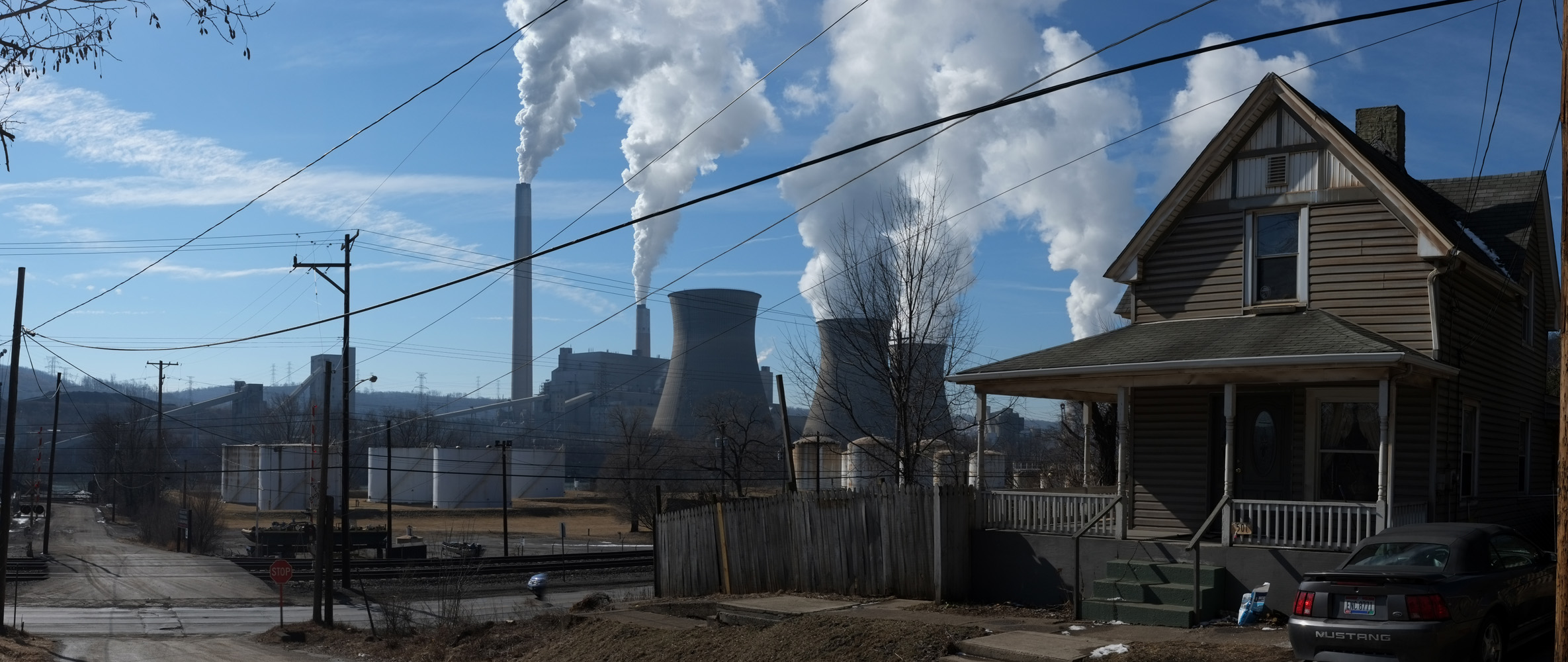
The Bruce Mansfield coal-fired power plant in Shippingport, Pa., generates power enough to supply one and a half million homes. It sits alongside the Ohio River in Beaver County, about 30 miles north-west of Pittsburgh. © Brian Cohen, 2014.


























Edgar Thomson Steel Works, Braddock, PA. © Brian Cohen, 2015.
Carrie Furnace is the last remaining unused blast furnace in the Pittsburgh area. It was built in 1881; furnaces 6 and 7, all that remain, functioned from 1908 to 1978, when the plant was shut down. Carrie made iron for the Homestead Works, at its peak employing approximately 2,400 people and producing over 1,000 tons of iron a day. © Brian Cohen, 2011.
Coal barge, Monongahela River. Coal barges such as this one, just east of Hazelwood, are a common sight on the Mon. Diesel fumes from road, rail and river traffic are a major source of air pollution in the river valleys of Western Pennsylvania. © Brian Cohen, 2010.
Conemaugh coal-fired power plant, in Indiana County, began operation in the early 1970s. Run by a subsidiary of GenOn Energy Inc., it burns more than 4 million tons of coal a year. According to Wikipedia, “In March 2011, PennEnvironment and the Sierra Club won a favorable court ruling finding that the plant had committed 8,684 violations of the Clean Water Act by discharging waste directly into the Conemaugh River.” © Brian Cohen, 2015.
Housing above the Edgar Thomson Steel Works, Braddock, PA. The ETSW remains a major source of air pollution, including small particle levels, in the Pittsburgh region. © Brian Cohen, 2014.
Oil cars, Kilbuck Run, near Sewickley. These cars—carrying plates numbered 1267, designating petroleum crude oil—were traveling east towards Pittsburgh. Diesel exhaust, including from trains, is a major source of air pollution in Pittsburgh. © Brian Cohen, 2015.
At the time this project was in production, the Shenango Inc. coke works on Neville Island was under a court order to reduce emissions. During a period of 432 days between July 2012 and September 2013, the coke works on Neville Island was in violation for 330 days. In December, 2015, it was announced that the plant would shut down. © Brian Cohen, 2014.
Oil cars running through the Shadyside neighborhood of Pittsburgh. Each car carries carries approximatley 30,000 gallons of volatile fuel. © Brian Cohen, 2015.
Springdale High School, at left, sits above the Cheswick Power Plant. © Brian Cohen, 2014.
View of Downtown Pittsburgh. © Brian Cohen, 2015.
Wind turbines near Berlin, PA. Wind turbines do not produce any known air pollutants. © Brian Cohen, 2014.
United States Steel Corporation, Clairton Coke Works is the largest coke manufacturing facility in the U.S. Part of the Mon Valley Works, it lies on the Monongahela River about 15 miles southeast of Pittsburgh. According to a September 2014 article in the Pittsburgh Post-Gazette, “U.S. Steel Corp.’s $1.2 billion upgrade of its Clairton Coke Works was supposed to significantly reduce air pollution, but some of the new equipment isn’t working as expected and has been in continuous violation of air emissions limits since its startup in November 2012.” © Brian Cohen, 2015.
Wind turbines near Altoona, PA. Wind turbines do not produce any known air pollutants. © Brian Cohen, 2014.
Carrie Furnace is the last remaining unused blast furnace in the Pittsburgh area. It was built in 1881; furnaces 6 and 7, all that remain, functioned from 1908 to 1978, when the plant was shut down. Carrie made iron for the Homestead Works, at its peak employing approximately 2,400 people and producing over 1,000 tons of iron a day. © Brian Cohen, 2011.
U.S. Steel's Edgar Thomson Steel Works in Braddock, PA. © Brian Cohen, 2014.
Elrama Power Plant, a coal-fired power station near Elrama, PA, about thirteen miles from Downtown Pittsburgh. It was shut down, due to tightened environmental regulations, in 2012. © Brian Cohen, 2014.
Since the 1940s, the Frank R. Phillips coal-fired power plant in South Heights, PA, provided electricity to Pittsburgh. It was taken out of service in the 1990s. This photograph was taken just before the plant was demolished. © Brian Cohen, 2011.
On the Monongahela River about 15 miles southeast of Pittsburgh, United States Steel Corporation's Clairton Coke Works is the largest coke manufacturing facility in the U.S. In January, 2015, the environmental non-profit PennFuture, announced legal action against U.S. Steel for violations of county, state, and federal clean air laws at the Clairton Coke Works. © Brian Cohen, 2015.
The quality and quantity of cloud cover across the globe has changed since the industrial period. In the simplest of terms, the skies were clearer in pre-industrial times; the burning of fossil fuels is the principle activity that affects both cloud formation and local climates. Anthroclouds – clouds formed by human activity – are a phenomenon associated with, amongst other things, thermal power plants such as the Homer City generating station, pictured here. © Brian Cohen, 2015.
Homer City coal-fired power plant in Indiana County generates enough energy to power two million homes. According to Wikipedia, in 1995 Homer City put out 127,383 pounds (57.780 metric tons) of sulfur dioxide (SO2); though scrubbers were installed in 1998, in 2003 Homer City was ranked the fourth worst SO2 polluter in the nation, putting out 151,262 pounds (68.611 metric tons) of SO2. More scrubbers were installed in 2012.. © Brian Cohen, 2011.
At the time this project was in production, the Shenango Inc. coke works on Neville Island was under a court order to reduce emissions. During a period of 432 days between July 2012 and September 2013, the coke works on Neville Island was in violation for 330 days. In December, 2015, it was announced that the plant would shut down. © Brian Cohen, 2015.
An oil car speeds past a derailed train in the Hazelwood neighborhood of Pittsburgh. Downtown Pittsburgh is less than three miles away. © Brian Cohen, 2015.
Diesel exhaust from road, river and rail traffic make a significant contribution to poor air quality. © Brian Cohen, 2014.
Little Blue Run Lake is a coal ash impoundment for waste piped seven miles from the Bruce Mansfield power plant in Shippingport. It is the largest such site in the United States, containing twenty billion of gallons of coal ash waste. Coal ash contains toxins such as mercury and selenium; the reason for the aquamarine color of the water is disputed, but likely due to the presence of heavy metals such as cadmium. Despite containing many harmful substances, coal ash is not regulated as hazardous waste by the EPA. © Brian Cohen, 2015.
Diesel exhaust from road, river and rail traffic make a significant contribution to poor air quality. © Brian Cohen, 2014.
The Bruce Mansfield coal-fired power plant in Shippingport, Pa., generates power enough to supply one and a half million homes. It sits alongside the Ohio River in Beaver County, about 30 miles north-west of Pittsburgh. © Brian Cohen, 2014.
